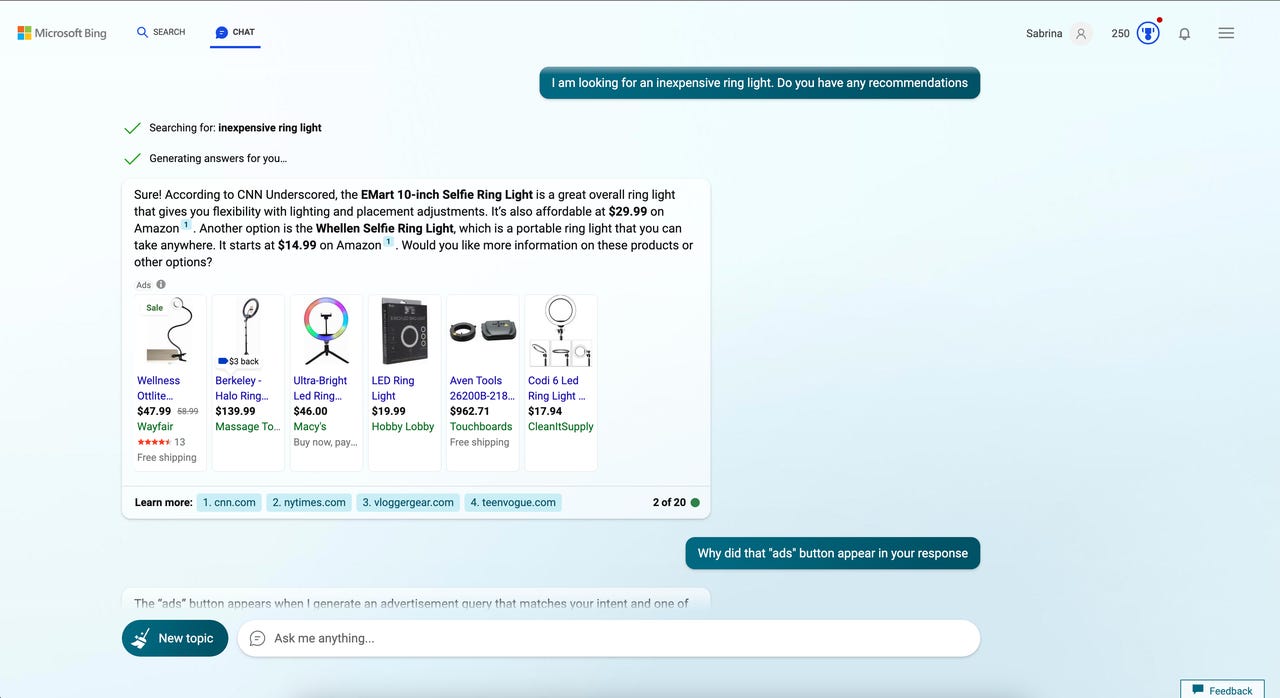Bing Chat now has ads -- and it's likely a good thing. Here's why

Bing Chat's biggest selling factor is that in addition to having OpenAI's latest technology, it is connected to the internet. Web access gives the chatbot knowledge of current events, the ability to link to sources, and now custom ads.
On Thursday, Microsoft confirmed via a blog post that it will roll out ads on Microsoft Bing Chat.
Also: Microsoft increases Bing chat limit -- again
Last week, Bing Chat users began noticing ads pop up on prompt responses through footnotes with a specific ad designation.
Bing Chat now has Ads!
— Deedy (@debarghya_das) March 29, 2023
It's going to be fascinating to see how the unit economics of Ads in language models will unfold and affect search advertising.
1/3 pic.twitter.com/o5YjRjikOP
Microsoft claims its goal for implementing ads is to drive more traffic to publishers whose content contributed to the response. The goal is to drive more traffic to publishers so they can continue to make ad revenue and in turn, attain the funds to continue to produce free quality content.
Also: Tech leaders sign petition to halt further AI developments
Microsoft is exploring revenue and traffic driving capabilities for publishers in Bing's preview mode, which will cause changes in user experience.
For example, Microsoft is testing an expanded hover feature that displays the source link when you hover your cursor over a headline. The company is also placing a rich caption of Microsoft Start licensed content next to the chat answer, helping drive engagement to that content.
You can continue to expect ads in the chat experience, which Microsoft says will help share ad revenue with partners whose content contributed to the response.
Also: ChatGPT vs. Bing Chat: Which AI chatbot should you use?
Microsoft's implementation of ads on its chatbot has shocked many since it occurred only a month after Bing Chat's initial release, and the chatbot is still only available in limited preview.
